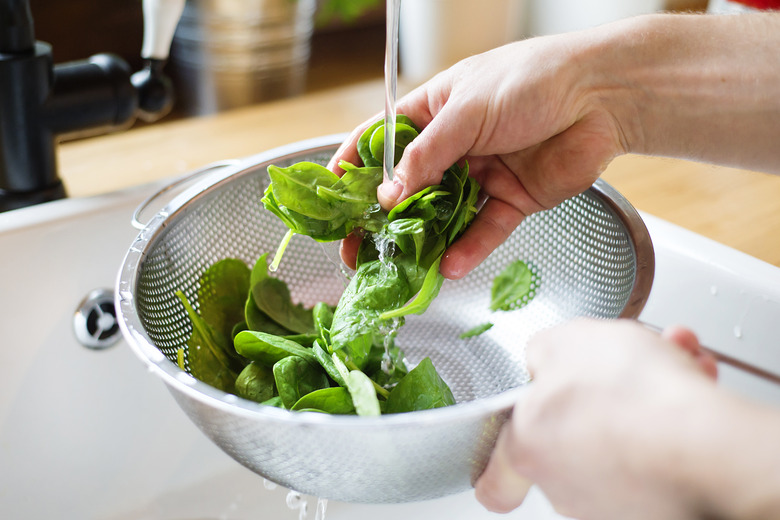How To Wash Fruits & Vegetables With Hydrogen Peroxide
Fruits and vegetables often aren't as clean as they appear. Aside from dirt and debris, grocery store produce can contain pesticide and fertilizer residue, wax coatings, harmful bacteria and oils from the hands and fingers of store employees and other customers. Not washing your produce properly can expose your family to food-borne illnesses like E. coli or Hepatitis A, according to the federal Food and Drug Administration. This is why it's so important to properly wash your produce before you eat it. While the FDA recommends only using running water to clean your produce, many people choose to use a peroxide solution for its bacteria-fighting properties.
Step 1
Wash your hands thoroughly with soap and hot water. Skipping this step can deposit bacteria back on to your clean produce. Disease-causing bacteria are common in our homes and on our hands.
- Fruits and vegetables often aren't as clean as they appear.
- While the FDA recommends only using running water to clean your produce, many people choose to use a peroxide solution for its bacteria-fighting properties.
Step 2
Use a vegetable soaking method by adding 1/4 to 1/2 cup of 3 percent peroxide solution to a large bowl, bucket or sink full of cool water. Gently place your produce in the soak and move them around in the water for a few seconds. Remove from the soak and rinse under cold running water for several seconds to rinse away the peroxide and any remaining dirt or bacteria. Don't allow the produce to soak in the solution for too long, as soft and porous foods can begin to absorb the water and peroxide, affecting their flavors.
Step 3
Use a spray bottle method by adding equal amounts of cool water and 3 percent hydrogen peroxide solution to a clean spray bottle. Be sure to use a dark spray bottle, as exposure to light weakens peroxide's bacteria killing properties. Place your produce in a colander or a clean sink and spray all sides with the peroxide and water solution. Rinse right away with cold water, using your fingers and hands to gently rub the surface of the foods.
- Use a vegetable soaking method by adding 1/4 to 1/2 cup of 3 percent peroxide solution to a large bowl, bucket or sink full of cool water.
- Place your produce in a colander or a clean sink and spray all sides with the peroxide and water solution.
Step 4
Wash partially cut fruits and vegetables, like melon halves or apple slices, by dabbing a clean cloth in a mixture of equal parts water and peroxide and gently wiping only the outer skin. Avoid cleaning the exposed flesh. Use a second cloth dabbed in just clean, cool water to rinse away the peroxide rinse.
Tip
Wait until you're about to use your fruits and vegetables to wash them to prevent premature ripening and spoiling. Make only as much solution as you need as it doesn't keep well. Make a fresh batch each time you wash fruits and vegetables.
Things Needed
- 3 percent hydrogen peroxide solution
- Spray bottle
